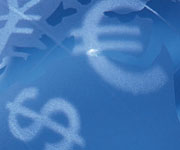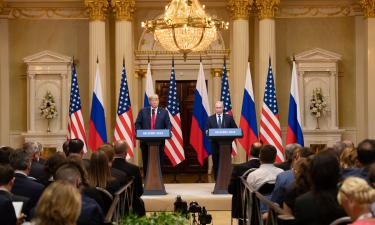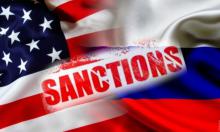US dollar takes global rise, euro surrenders
One may say that the American currency is experiencing its happy days, even weeks
The US dollar has reached the highest point of its growth during the recent three months (from the middle of February). The strengthening of the dollar is accompanied with the reduction of the cost of the European currency. The euro rate has lost 66 kopecks against the Russian ruble in Russia during one week only. 
Russian specialists, however, say that they would rather deal with a slower growth of the US currency. “We have a lot of restrictions connected with the growth of the dollar rate. The weight of the dollar is considerable in the Russian economy and oil prices are high too. We have to deal with the foreign currency profit obtained at the Russian currency exchange,” Karen Patrikeyev from Credit-Moscow Bank said. “If the dollar rate sets over the level of 28 rubles per dollar (which has already happened) it would be possible to say that the dollar will continue growing, albeit at a slower pace,” the specialist told RIA Novosti.
Development indexes of the American and European economies are traditionally important for the foreign currency market. Experts say that there will be a lot of such publications made during the upcoming week. “We are expecting the data on the inflation rate and the speed of the industrial production in the USA,” financial analyst Elena Khrupova said. The specialist emphasized the direct connection between the data of inflation and the movement of the dollar rate. “The dollar might rise in value in the event the inflation rate grows too, and slide down if the inflation drops,” Khrupova said.
In general, experts do not expect a significant difference between the rates of the US and the European currencies. “The most important publication, regarding the reduction of the US trade balance shortage, came out last week. There will be no stronger information than that,” Karen Patrikeyev said.
According to the recently-published report from the US Treasury about the net inflow of capital in March of the current year, the inflow index was the lowest since October of 2003. Experts say, however, that these negative data will not exert a significant influence on the US dollar rate: they would only set its growth within reasonable limits.
One may say that the American currency is experiencing its happy days, even weeks. The proficit of the US budget, the data of which were published last week, set a record level over the recent three years. The budget income exceeded the spending on the level of $57.71 billion. The index was three times as low just a year ago. Nevertheless, one should bear in mind the fact that the USA finished March with the budget shortage of $71.23 billion.
It became known last Wednesday that the USA's foreign trade deficit unexpectedly dropped in March vs. the level of the previous month: $55 billion in March against $60.6 billion in February. It is worth mentioning that analysts were expecting an increase of the index to $61.9 billion, from the level of $61 billion that was announced in February.
According to experts' estimates, the increasing export of consumer goods became the basic reason of the trade deficit reduction. The news made for the strengthening of the US dollar on the global market against all world currencies.
Russian Prime Minister Aleksey Kudrin has recently stated that Russia was interested in the weakening of the ruble against the US dollar. The statement became another factor to improve dollar's position on the Russian market as well. According to the minister, the strong ruble harms the national economy. It is noteworthy that the views of the Russian government regarding the ruble-dollar ratio were absolutely different a week ago. Spokespeople for Russian Central Bank and governmental officials said that the ruble needed to be strengthened to correct the inflation rate.
In addition, George W. Bush stated in his weekly radio address to the nation that the whole world envied the US economy. One should not be that envious and rush to exchange shops and convert savings into dollars, though. The Russian Central Bank gradually mixes its currency reserves with the European currency, increasing the share of the euro up to 30 percent against the dollar.
Subscribe to Pravda.Ru Telegram channel, Facebook, RSS!





